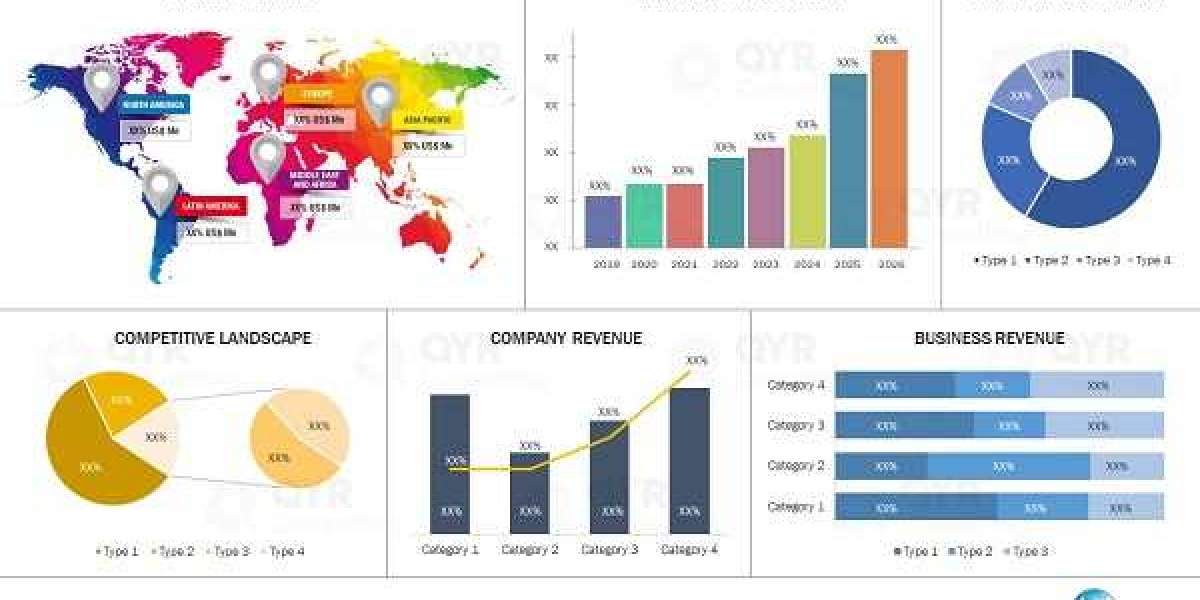The Olive Oil Market sector is undergoing rapid transformation, with significant growth and innovations expected by 2031. In-depth market research offers a thorough analysis of market size, share, and emerging trends, providing essential insights into its expansion potential. The report explores market segmentation and definitions, emphasizing key components and growth drivers. Through the use of SWOT and PESTEL analyses, it evaluates the sector’s strengths, weaknesses, opportunities, and threats, while considering political, economic, social, technological, environmental, and legal influences. Expert evaluations of competitor strategies and recent developments shed light on geographical trends and forecast the market’s future direction, creating a solid framework for strategic planning and investment decisions.
Get a Sample PDF of Report - https://www.databridgemarketresearch.com/request-a-sample/?dbmr=global-olive-oil-market
Which are the top companies operating in the Olive Oil Market?
The report profiles noticeable organizations working in the water purifier showcase and the triumphant methodologies received by them. It likewise reveals insights about the share held by each organization and their contribution to the market's extension. This Global Olive Oil Market report provides the information of the Top Companies in Olive Oil Market in the market their business strategy, financial situation etc.
Cargill, Incorporated, Deoleo, Del Monte Foods, Inc, Gallo Worldwide, BORGES INTERNATIONAL GROUP, S.L.U., Avenida Rafael Ybarra, SOVENA, Sun Grove Foods Inc., EU Olive Oil Ltd, Artajo oil, SALOV GROUP, Aceites Sandúa, Tucan Olive Oil Company LTD, Domenico Manca S.p.a., Les huiles d'olive Lahmar, GRAMPIANS OLIVE CO., Victorian Olive Groves, Gourmet Foods Inc., JAENCOOP GROUP, ΜΙΝΕRVΑ, among others
Report Scope and Market Segmentation
Which are the driving factors of the Olive Oil Market?
The driving factors of the Olive Oil Market are multifaceted and crucial for its growth and development. Technological advancements play a significant role by enhancing product efficiency, reducing costs, and introducing innovative features that cater to evolving consumer demands. Rising consumer interest and demand for keyword-related products and services further fuel market expansion. Favorable economic conditions, including increased disposable incomes, enable higher consumer spending, which benefits the market. Supportive regulatory environments, with policies that provide incentives and subsidies, also encourage growth, while globalization opens new opportunities by expanding market reach and international trade.
Olive Oil Market - Competitive and Segmentation Analysis:
**Segments**
- **Type:** The olive oil market is segmented based on type into virgin olive oil, refined olive oil, and olive pomace oil. Virgin olive oil is expected to hold a significant share in the market owing to its superior quality and health benefits compared to refined oils.
- **End Use:** The market is segmented by end use into the food industry, cosmetics industry, and pharmaceutical industry. The food industry segment dominates the market due to the widespread use of olive oil in cooking and food preparations.
- **Distribution Channel:** Olive oil is distributed through multiple channels including supermarkets/hypermarkets, specialty stores, online retail, and others. Supermarkets/hypermarkets are the largest distribution channel for olive oil due to the convenience and wide variety of options available to consumers.
**Market Players**
- **Deoleo S.A.** - A leading player in the global olive oil market, Deoleo S.A. offers a wide range of olive oil products catering to various consumer preferences.
- **Salov S.p.A.** - Salov S.p.A. is known for its high-quality olive oil products and has a strong presence in both domestic and international markets.
- **Borges International Group** - Borges International Group is a key player in the olive oil market, known for its sustainable practices and premium quality olive oil offerings.
- **Colavita S.p.A.** - Colavita S.p.A. is a well-established brand in the olive oil market, with a focus on producing authentic Italian olive oil products.
The global olive oil market is witnessing steady growth driven by the rising demand for healthy cooking oils and increased awareness of the health benefits associated with olive oil consumption. Factors such as the growing popularity of Mediterranean cuisine, changing dietary preferences, and the shift towards organic and natural products are fueling the market growth. The market is also influenced by factors such as increasing disposable incomes, urbanization, and a growing trend towards wellness and healthy livingThe global olive oil market is a dynamic and ever-evolving industry that is experiencing robust growth driven by various factors. One of the key drivers of market growth is the increasing awareness among consumers about the health benefits of olive oil consumption. Olive oil is rich in monounsaturated fats and antioxidants, making it a healthier alternative to other cooking oils. As consumers become more health-conscious and seek out natural and organic products, the demand for olive oil is expected to continue rising.
Another major factor contributing to the growth of the olive oil market is the growing popularity of Mediterranean cuisine worldwide. Olive oil is a staple ingredient in Mediterranean cooking and is used in a variety of dishes, from salads to pasta to grilled meats. The rise of food tourism and the increasing globalization of cuisines have further propelled the demand for olive oil as consumers seek to recreate authentic Mediterranean flavors in their own kitchens.
Furthermore, the shift towards organic and natural products is driving consumers towards premium olive oil products that are produced using sustainable practices. Market players like Borges International Group, known for their sustainable practices, are well-positioned to capitalize on this trend and attract eco-conscious consumers who prioritize environmental stewardship.
Additionally, the rising disposable incomes in emerging economies, coupled with urbanization trends, are expanding the consumer base for olive oil products. As more people move to urban areas and adopt Western dietary habits, the demand for olive oil as a healthier cooking alternative is expected to increase.
In terms of market players, companies like Deoleo S.A., Salov S.p.A., Colavita S.p.A., and Borges International Group are leading the global olive oil market with their diverse product offerings and strong brand presence. These players invest in product innovation, marketing strategies, and sustainability initiatives to maintain their competitive edge in the market and cater to evolving consumer preferences.
Overall, the global olive oil market is poised for continued growth driven by health awareness, culinary trends, sustainability efforts, and changing consumer lifestyles. As consumers prioritize health and wellness, the demand forThe global olive oil market is a highly competitive and dynamic industry that is poised for steady growth in the coming years. One of the key trends driving market expansion is the increasing consumer awareness of the health benefits associated with olive oil consumption. Olive oil is rich in monounsaturated fats and antioxidants, making it a popular choice for health-conscious consumers seeking natural and organic products. This health-conscious trend is expected to fuel the demand for olive oil as consumers prioritize healthier cooking alternatives.
Moreover, the growing popularity of Mediterranean cuisine globally is also a significant driver of market growth. Olive oil is a fundamental ingredient in Mediterranean cooking and is widely used in various dishes, contributing to the surge in demand for olive oil products worldwide. The rise of food tourism and the globalization of cuisines have further boosted the demand for olive oil as consumers embrace the flavors of Mediterranean cuisine and incorporate them into their culinary practices.
Another crucial factor propelling market growth is the increasing trend towards organic and sustainable products. Consumers are increasingly seeking premium olive oil products that are produced using sustainable practices, such as those offered by market players like Borges International Group. As environmental consciousness and ethical consumerism rise, companies that prioritize sustainability are likely to attract eco-conscious consumers and gain a competitive edge in the market.
Additionally, the rise in disposable incomes in emerging economies and urbanization trends are expanding the consumer base for olive oil products. As more individuals in urban areas adopt Western dietary habits and seek healthier cooking oils, the demand for olive oil is anticipated to grow significantly.
Explore Further Details about This Research Olive Oil Market Report https://www.databridgemarketresearch.com/reports/global-olive-oil-market
Key Benefits for Industry Participants and Stakeholders: –
- Industry drivers, trends, restraints, and opportunities are covered in the study.
- Neutral perspective on the Olive Oil Market scenario
- Recent industry growth and new developments
- Competitive landscape and strategies of key companies
- The Historical, current, and estimated Olive Oil Market size in terms of value and size
- In-depth, comprehensive analysis and forecasting of the Olive Oil Market
Geographically, the detailed analysis of consumption, revenue, market share and growth rate, historical data and forecast (2024-2031) of the following regions are covered in Chapters
The countries covered in the Olive Oil Market report are U.S., Canada, Mexico, Brazil, Argentina, Rest of South America, Germany, Italy, U.K., France, Spain, Netherlands, Belgium, Switzerland, Turkey, Russia, Rest of Europe, Japan, China, India, South Korea, Australia, Singapore, Malaysia, Thailand, Indonesia, Philippines, Rest of Asia-Pacific, Saudi Arabia, U.A.E, South Africa, Egypt, Israel, and Rest of the Middle East and Africa
Detailed TOC of Olive Oil Market Insights and Forecast to 2031
Part 01: Executive Summary
Part 02: Scope Of The Report
Part 03: Research Methodology
Part 04: Olive Oil Market Landscape
Part 05: Pipeline Analysis
Part 06: Olive Oil Market Sizing
Part 07: Five Forces Analysis
Part 08: Olive Oil Market Segmentation
Part 09: Customer Landscape
Part 10: Regional Landscape
Part 11: Decision Framework
Part 12: Drivers And Challenges
Part 13: Olive Oil Market Trends
Part 14: Vendor Landscape
Part 15: Vendor Analysis
Part 16: Appendix
Browse More Reports:
Asia-Pacific Dental Lasers Market – Industry Trends and Forecast
Gynecology Surgical Instruments Market – Industry Trends and Forecast
Industrial X-Ray Market – Industry Trends and Forecast
Surgical Sutures Market – Industry Trends and Forecast
North America Surgical Sutures Market – Industry Trends and Forecast
Europe Surgical Sutures Market – Industry Trends and Forecast
Asia-Pacific Surgical Sutures Market – Industry Trends and Forecast
North America Foam Insulation Market - Industry Trends and Forecast
Europe Foam Insulation Market – Industry Trends and Forecast
Asia-Pacific Foam Insulation Market – Industry Trends and Forecast
U.S. Internal Neuromodulation Devices Market - Industry Trends and Forecast
Belgium Foam Insulation Market – Industry Trends and Forecast
France Foam Insulation Market – Industry Trends and Forecast
North America Industrial X-Ray Market – Industry Trends and Forecast
Europe Industrial X-Ray Market – Industry Trends and Forecast
Data Bridge Market Research:
Today's trends are a great way to predict future events!
Data Bridge Market Research is a market research and consulting company that stands out for its innovative and distinctive approach, as well as its unmatched resilience and integrated methods. We are dedicated to identifying the best market opportunities, and providing insightful information that will help your business thrive in the marketplace. Data Bridge offers tailored solutions to complex business challenges. This facilitates a smooth decision-making process. Data Bridge was founded in Pune in 2015. It is the product of deep wisdom and experience.
Contact Us:
Data Bridge Market Research
US: +1 614 591 3140
UK: +44 845 154 9652
APAC: +653 1251 978











